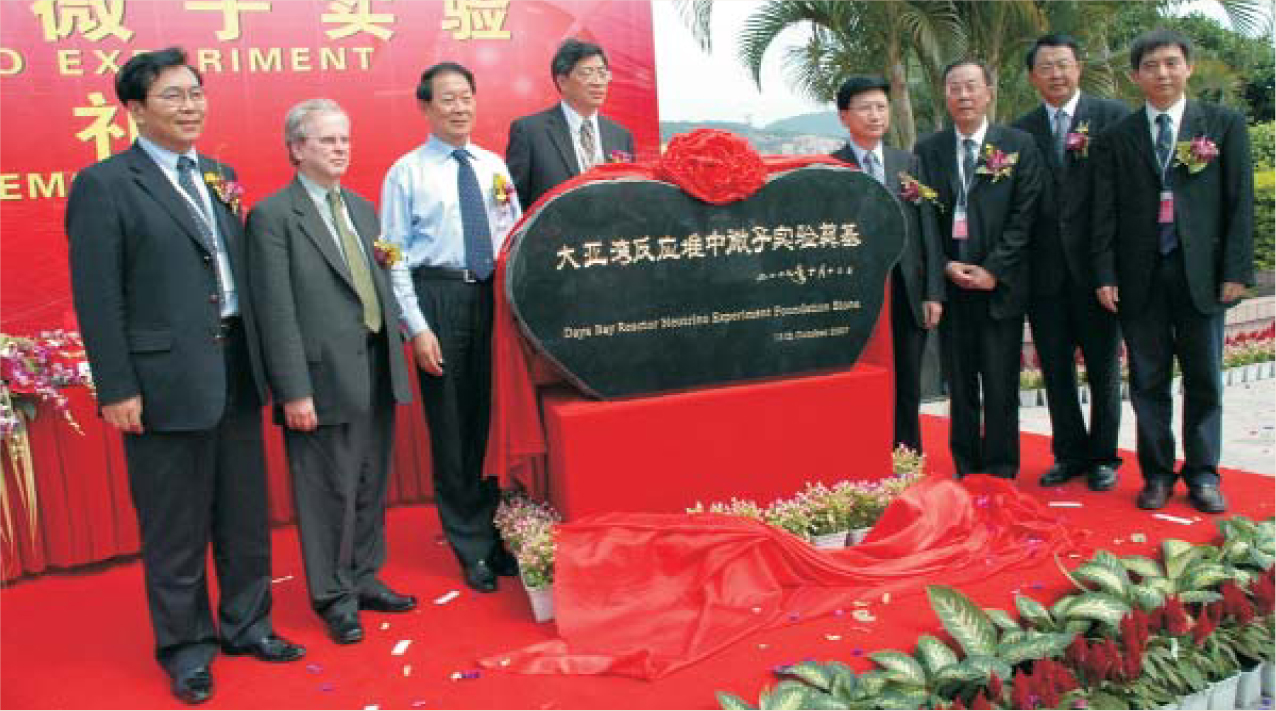International neutrino experiment breaks ground
DOI: 10.1063/1.2825065
A large project that will seek a small effect was inaugurated with a groundbreaking ceremony on 13 October. The Daya Bay Reactor Neutrino Experiment, located in China’s Guangdong Province about 55 km northeast of Hong Kong, is designed to measure θ13, the last unknown neutrino mixing angle.
The experiment will use eight movable underground detectors to monitor six local nuclear power reactors for the disappearance of electron antineutrinos (see Physics Today, November 2006, page 31
The ceremony marked the start of excavation for tunnels and experiment halls. It was attended by Chinese and American officials; Robin Staffin, associate director of the US Department of Energy’s Office of High Energy Physics, is second from left in the photo. (Staffin has since become an adviser to Ray Orbach, DOE’s under secretary for science.) The experiment is expected to be fully up and running in 2010. Chunli Bai, the Chinese Academy of Sciences’ executive vice president (far left), said the experiment “bears great importance in strengthening international collaboration in the field of basic sciences.”
More than 190 scientists from 35 institutions on 3 continents are involved in the Daya Bay experiment, which in terms of both money and people is among the largest scientific collaborations between the US and China. The other participants are from Hong Kong, Taiwan, the Czech Republic, and Russia. DOE is expected to approve the final scope of US participation in the next few months, and to contribute about $34 million, or roughly half the cost of detector construction.

THE INSTITUTE OF HIGH ENERGY PHYSICS, BEIJING

More about the Authors
Toni Feder. American Center for Physics, One Physics Ellipse, College Park, Maryland 20740-3842 US . tfeder@aip.org
